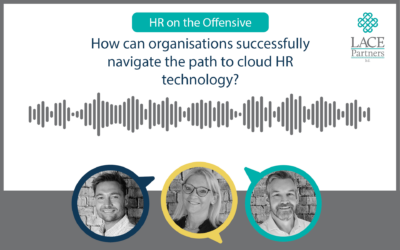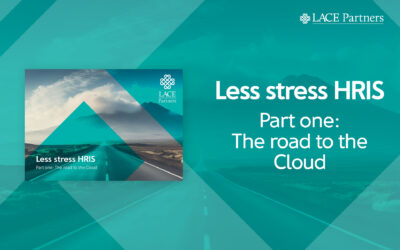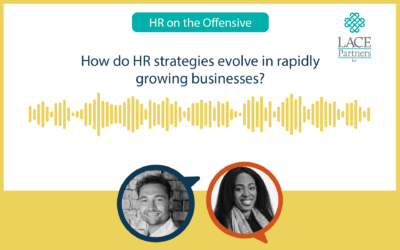At LACE, we’re often asked about the best approaches when selecting HR and people experience software. The first question is often about Feature Function Fit (FFF) frameworks as a preferred evaluation approach. Companies still feel they need to spend inordinate amounts of time detailing their requirements, matching them against vendor feature lists, and then investing significant resource time towards getting that perfect answer as to which system is the right FIT for them.
Here’s the scoop: The answer often isn’t, ‘Voila! Your framework is complete, and this will deliver you the perfect solution you’ve always dreamed of.’
In reality, the FFF approach can leave companies with systems that aren’t aligned with the real needs of the business (e.g. from a service enablement or digital adoption perspective).
Without adopting a mindset where an organisation is preparing themselves for the digital transformation (we talk about transformation readiness at LACE, which you can read more about here), organisations can find themselves with a system that isn’t being properly used or fails to deliver on the promise of innovation and transformation. We’ve listed below the reasons why.
Need to focus on the ‘why’, not on the ‘what.’
FFF excels at ticking boxes.
Do we need onboarding capabilities? Tick. Reporting? Tick.
But it doesn’t focus on whether these features genuinely solve underlying problems or drive your business objectives forward. Companies may end up spending heavily on systems or functionality they don’t need or aren’t a priority, and the result is that more cost comes back in the form of reworking systems to fit the actual needs of the business. Organisations going through the RFP (request for proposal) process need to ask themselves, What is our people experience ambition and how can we craft a holistic experience? What is our case for change and how do we ensure we aren’t experiencing buyer’s remorse? What are our priorities, and how do they sit as part of our longer-term objectives?
Unless you start with the right foundational questions, you will never really be able to answer the ‘why’ and the ‘when’.
We have previously written about how you need to rethink that case for change in a blog that you can find here.
Innovation stifled
Sticking rigidly to predefined requirements limits exposure to disruptive or innovative solutions. The vendors you engage with might showcase new approaches capable of solving a company’s problems in fundamentally better ways. Still, these can be dismissed if they don’t tick a box against a specific feature checklist. When you’re looking at getting your demos lined up to see the software, lean into your uniqueness as a business and consider business scenarios that the technology can enable versus following a script. Your business is unique, and the system you need will be different, so why focus on a predefined set of questions?
A good vendor will want you to be adaptable in your approach because they will want you to have a great experience as much as you do. Let the vendor show you ‘what great looks like’ and the art of the possible.
Don’t ignore the human factor
Focusing on feature matching alone neglects employee experience, usability, and system adoption. A solution might technically do everything you need, but if it’s a usability nightmare for your employees, you’ve bought yourself a new toy without driving successful change. The design and build of your system will never follow a linear path; the user experience will always find ways that will not follow specific predefined paths.

Also, the system shouldn’t be considered in isolation from the rest of the human operating model. To enable adoption and simplification, you must consider the way the system sits in the broader HR operating model (e.g. the role of the Business Partner, the process owners, line managers and how the solution support model needs to change as you move to a Software as a Service (SaaS) model). If there isn’t a holistic view across people, process and technology aspects, delivering a positive employee experience will be at risk.
It’s time for a paradigm shift
It’s not about eliminating FFF considerations entirely but rather making space for new ways of thinking, so here are our thoughts on how you can take a more innovative approach to your vendor selection process:
Get a ‘problem-first’ mentality
Shift the emphasis from technology to the actual business problems you need to solve. This opens the door to solutions that may not align perfectly with your predetermined expectations.
Embrace experimentation
Encourage vendors to demonstrate their value with demonstrations or small-scale pilots. You’ll see first hand how the software operates to solve your business problems. It will also open your eyes to the other aspects of the operating model that will need to change to enable success.
Prioritise people / employee experience
Put employee experience at the forefront. Assess solutions on their intuitiveness, ease of adoption, and potential to deliver (and measure) true employee satisfaction.
Seek true working partnerships
This is a long-term commitment. Instead of just software vendors, look for long-term strategic partners who understand your business needs and are committed to continuous evolution alongside your company. You don’t start personal relationships without spending time understanding people before befriending/dating them. The same applies to work – the relationship and how you will work together is as important.
At LACE Partners we believe the best solutions come from understanding your unique priorities. Our technology agnostic philosophy means we have relationships with all of the major vendors and use our deep knowledge of the products to work to match your specific needs when offering guidance.
The innovation edge
By working with a provider that is always looking to innovate and improve on its offering, you can find a competitive advantage. The best vendors will want to make sure you are able to implement their releases, and so, getting your approach to release management when you move to a SaaS platform is vital (more on approaches to release management here).
A great vendor relationship will enable you to have:
· Increased operational efficiency: Solutions that genuinely address core challenges streamline processes and save resources.
· Boosted employee engagement: Employee-centric and user-friendly systems create a positive and productive work environment.
· Enhanced problem-solving: Fresh perspectives and new technologies uncover unique solutions.
If you’re willing to be adaptable and flexible in the way in which you are approaching an RFP, then you’ll be rewarded with these advantages.
Time to break the RFP mould
While traditional FFF methods still have some value, clinging to them in today’s agile technology world limits your business’ potential. By focusing on problem-solving, employee-centricity, and ongoing collaboration, you pave the way for finding not just a software solution but a proper roadmap for success.
Remember – the purpose of embedding a new HR platform in your business is to solve business challenges and meet the expectations of your people strategy. The system is a tool designed to meet objectives, so as long as you have that mindset in place from the beginning of your journey, you’ll be on the right track to success.
If you’d like some follow-up watching, in 2023 we ran a series on getting buyer’s remorse with your HR tech investments that might be of interest. You can see all of the ‘on-demand’ versions of the webinars here as well as blogs looking at:
- What causes buyer’s remorse for HR technology investments?
- Understanding and overcoming buyer’s remorse in HR tech investments
If you’d like to talk to any of our team about some of your challenges and your RFP approach, fill in the form below and mention that you’d like to talk about vendor selection processes.






